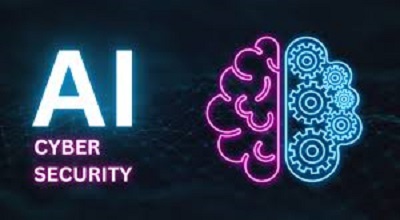AI in Cybersecurity
AI in Cybersecurity: In today’s digital landscape, cybersecurity threats are evolving at an unprecedented pace. Cybercriminals are leveraging advanced techniques, making traditional security measures insufficient. Enter Artificial Intelligence (AI)—a game-changer in cybersecurity. AI enhances threat detection, automates responses, and predicts vulnerabilities before they are exploited.
At ZoomDoors.com, we explore the latest trends and innovations in AI-driven cybersecurity, helping businesses stay ahead of cyber threats. This comprehensive guide covers everything from AI-powered threat detection to future advancements in cybersecurity.
AI in cybersecurity refers to the use of machine learning (ML), deep learning, and natural language processing (NLP) to detect, prevent, and respond to cyber threats. Unlike traditional security systems that rely on predefined rules, AI continuously learns from data, improving its ability to identify and mitigate risks.
Key Components of AI in Cybersecurity:
- Machine Learning (ML): Identifies patterns in data to detect anomalies.
- Natural Language Processing (NLP): Analyzes text-based threats like phishing emails.
- Deep Learning: Enhances malware detection by analyzing complex data structures.
Why is AI Important in Cybersecurity?
Cyber threats are becoming more sophisticated, requiring faster and smarter defense mechanisms. Here’s why AI is crucial:
Benefits of AI in Cybersecurity:
✅ Real-Time Threat Detection: AI identifies threats in milliseconds.
✅ Reduces False Positives: Minimizes unnecessary alerts.
✅ Automates Responses: Speeds up incident resolution.
✅ Predictive Security: Anticipates attacks before they happen.
✅ Scales with Business Needs: Adapts to growing data volumes.
Latest Trends in AI-Powered CS
AI-Driven Threat Detection
AI analyzes vast amounts of data to detect unusual activities, such as:
- Unauthorized access attempts
- Malware signatures
- DDoS attack patterns
Example: Darktrace’s Enterprise Immune System uses AI to detect and neutralize threats in real time.
Behavioral Analytics & Anomaly Detection
AI monitors user behavior to detect deviations from normal activity, such as:
- Unusual login times
- Abnormal data transfers
- Suspicious insider threats
Example: Microsoft Azure Sentinel uses AI for user and entity behavior analytics (UEBA).
Automated Incident Response
AI-powered tools like SOAR (Security Orchestration, Automation, and Response) help:
- Automatically block malicious IPs
- Isolate infected devices
- Generate incident reports
Example: Palo Alto Networks’ Cortex XSOAR automates threat response workflows.
Zero Trust Security with AI
AI enhances Zero Trust models by continuously verifying:
- User identities
- Device security posture
- Network access requests
Example: Google’s BeyondCorp uses AI to enforce Zero Trust policies.
AI in Phishing Detection
AI scans emails for:
- Malicious links
- Spoofed sender addresses
- Suspicious language patterns
Example: Barracuda Sentinel uses AI to block phishing attacks.
Innovations Shaping the Future of AI in CS
Deep Learning for Malware Analysis
Deep learning models analyze file structures, code behavior, and attack vectors to detect zero-day malware.
AI-Powered Security Orchestration
AI integrates with SIEM (Security Information and Event Management) tools to streamline threat intelligence.
Quantum Computing & AI in Cybersecurity
Quantum AI can break encryption but also enhance cryptographic security.
Self-Learning AI Systems
The AI models like GPT-4 can simulate cyberattacks to improve defense strategies.
AI for IoT Security
AI secures smart devices by detecting unauthorized access and vulnerabilities.
Challenges of Implementing AI in CS
Despite its benefits, AI in cybersecurity faces challenges:
- Data Privacy Concerns
- High Implementation Costs
- Adversarial AI Attacks (AI vs. AI)
- Lack of Skilled Professionals
How Businesses Can Leverage AI for CS?
- Adopt AI-powered security tools (e.g., CrowdStrike, Darktrace).
- Train employees on AI-driven security protocols.
- Integrate AI with existing security frameworks.
Future of AI Cybersecurity
- The future holds:
- Autonomous Security Systems
- AI-Powered Cyber Threat Intelligence
- AI-Augmented Human Analysts
FAQs
Q1: How does AI improve cybersecurity?
AI enhances threat detection, automates responses, and predicts attacks using machine learning.
Q2: Can AI replace human cybersecurity experts?
No, AI supplements human efforts by handling repetitive tasks, while experts make strategic decisions.
Q3: What are the risks of AI in CS?
AI can be exploited by hackers (adversarial AI) and may generate false positives if not properly trained.
Q4: Which industries benefit most from AI CS?
Finance, healthcare, government, and e-commerce due to high-value data.
Q5: What’s the best AI CS tool for small businesses?
Tools like Darktrace Antigena and Cisco SecureX offer scalable AI security solutions.
Conclusion
AI is revolutionizing cybersecurity with real-time threat detection, automated responses, and predictive analytics. As cyber threats grow, businesses must adopt AI-powered security solutions to stay protected.

